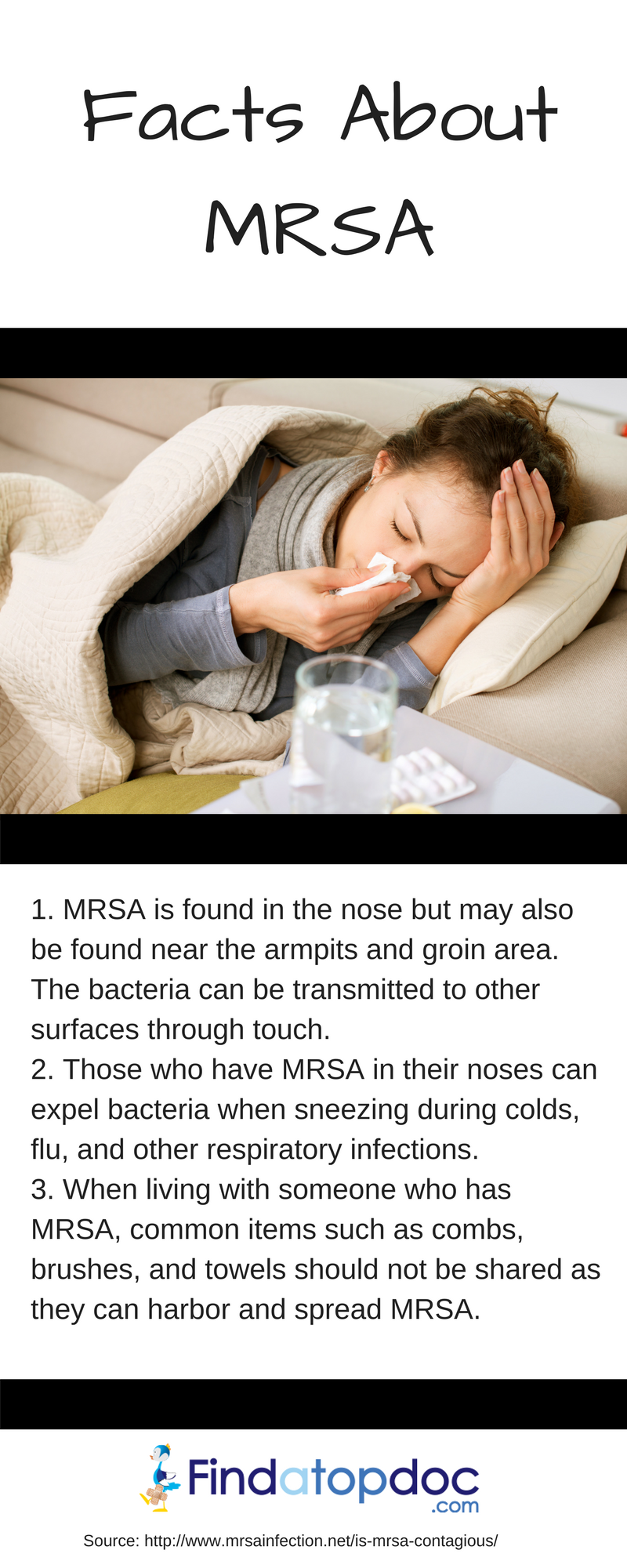
Source
Causes
Garden-variety staph are common bacteria that can live inside the body. Plenty of healthy people carry staph without being infected by it. In fact, one third of everybody has staph bacteria in their noses. But staph can be a problem if it manages to get into the body, often through a cut. Once there, it can cause an infection. Staph is one of the most common causes of skin infections in the U.S. Usually, these are minor and don't need special treatment. Less often, staph can cause serious problems like infected wounds or pneumonia.
Staph can usually be treated with antibiotics. But over the decades, some strains of staph, like MRSA, have become resistant to antibiotics that once destroyed it. MRSA was first discovered in 1961. It's now resistant to methicillin, amoxicillin, penicillin, oxacillin, and many other common antibiotics.
Symptoms
Staph skin infections, including MRSA, usually start as swollen, painful red bumps that might resemble pimples or spider bites. The affected area might be:
- Warm to the touch
- Full of pus or other drainage
- Accompanied by a fever
Who Gets MRSA?
MRSA is spread by contact. So, you could get MRSA by touching another person who has it on the skin. Or you could get it by touching objects that have the bacteria on them. MRSA is carried by about 2% of the population (or 2 in 100 people), although most of them aren't infected.
MRSA infections are very common among people who have weak immune systems and are in hospitals, nursing homes, etc. Infections can appear around surgical wounds or invasive devices, like catheters or implanted feeding tubes.
Treatment
Both health care-associated and community-associated strains of MRSA still respond to certain antibiotics. In some cases, antibiotics may not be necessary. For example, doctors may drain a superficial abscess caused by MRSA rather than treat the infection with drugs.
In the hospital, people who are infected or colonized with MRSA are often placed in contact precautions as a measure to prevent the spread of MRSA. Health care workers and visitors caring for people in isolation are required to wear protective garments and must follow strict hand hygiene procedures. Contaminated surfaces and laundry items should be properly disinfected. So, make sure to notice the symptoms on time in order to prevent MRSA from spreading rapidly!